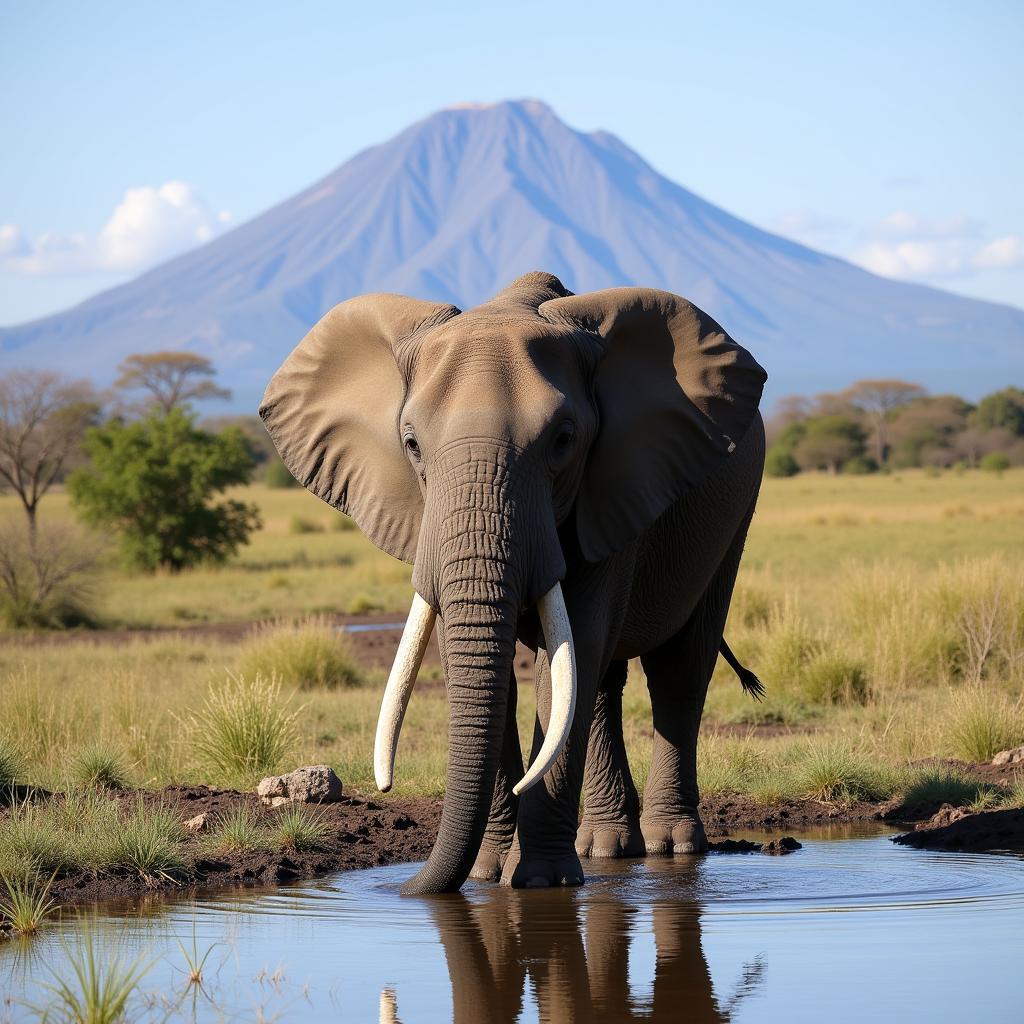Discovering the African Clownfish: A Comprehensive Guide
The vibrant and captivating African Clownfish, also known as the Amphiprion allardi, is a unique species native to the Western Indian Ocean. This article delves into the fascinating world of these charismatic creatures, exploring their habitat, behavior, and the crucial role they play in the delicate balance of their marine ecosystem. We’ll also touch on their popularity in the aquarium trade and the conservation efforts needed to protect them.
Habitat and Distribution of the African Clownfish
The African clownfish makes its home in the warm, tropical waters of the Western Indian Ocean, stretching from the coast of East Africa down to South Africa, including Madagascar and surrounding islands. They are typically found in shallow reefs, lagoons, and sheltered bays, at depths ranging from 3 to 30 meters. These reefs, bursting with colorful corals and anemones, provide the perfect backdrop for these striking orange and white fish.
Symbiotic Relationships: The Anemone and the African Clownfish
One of the most remarkable aspects of the African clownfish is its symbiotic relationship with sea anemones. These anemones, armed with stinging tentacles, offer protection from predators. In return, the clownfish helps keep the anemone clean and free of parasites, and may even lure smaller fish towards the anemone, providing it with a meal. This fascinating partnership highlights the interconnectedness of life on the coral reef.
“The delicate balance between the African clownfish and its host anemone is a testament to the intricacies of nature,” says Dr. Amina Omar, a renowned marine biologist specializing in the coral reefs of the Western Indian Ocean. “Each species benefits the other, ensuring their mutual survival in a sometimes harsh environment.”
How Does the Clownfish Survive the Anemone’s Sting?
The clownfish has a special mucus coating that protects it from the stinging nematocysts of the anemone. This adaptation allows it to live within the anemone’s tentacles, safe from predators that would otherwise avoid the anemone’s sting.
Diet and Feeding Habits
African clownfish are omnivores, feeding on a variety of small invertebrates, algae, and plankton. They will also consume leftover food scraps from their anemone host. Their diverse diet contributes to the health of the reef ecosystem by keeping algae populations in check.
Social Structure and Reproduction
African clownfish live in small groups within a single anemone, with a strict social hierarchy. The largest and most aggressive fish is the female, followed by the breeding male. The remaining fish are non-breeding males. If the female dies, the breeding male will change sex and become the dominant female, and the next largest male will become the breeding male.
Breeding Behaviors of the African Clownfish
During breeding season, the male prepares a nest site near the base of the anemone. The female then lays her eggs, which the male fertilizes. Both parents guard the eggs until they hatch, fanning them with their fins to provide oxygen and removing any debris.
The African Clownfish in the Aquarium Trade
The striking beauty and fascinating behavior of the African clownfish have made it a popular addition to home aquariums. african butterfly fish feeding However, it is important to ensure that these fish are sourced sustainably and ethically, from reputable breeders or suppliers who prioritize the health of the coral reefs.
“When considering adding an African clownfish to your aquarium,” advises Mr. Jabari Salim, an experienced aquarist and conservationist, “it’s vital to research their specific needs, including proper tank size, water parameters, and compatible tank mates, to ensure their well-being in captivity.”
Conservation Concerns
While not currently listed as endangered, the African clownfish faces increasing threats due to habitat destruction, pollution, and overfishing. Protecting coral reefs and promoting sustainable fishing practices are crucial for the long-term survival of this captivating species. Protecting these unique ecosystems is essential not just for the African clownfish, but for the countless other species that depend on them.
Conclusion
The African clownfish, with its vibrant colors, unique symbiotic relationships, and fascinating behaviors, offers a glimpse into the complex beauty of the African marine world. By understanding and addressing the challenges facing this remarkable species, we can contribute to the preservation of this vital part of our planet’s biodiversity.
FAQs
- What is the scientific name of the African clownfish? (Amphiprion allardi)
- Where are African clownfish found? (Western Indian Ocean)
- What do African clownfish eat? (Small invertebrates, algae, plankton)
- How do clownfish survive the anemone’s sting? (Protective mucus coating)
- Why are African clownfish important to the ecosystem? (Help maintain the health of coral reefs)
- Are African clownfish endangered? (Not currently, but face increasing threats)
- How can I help protect African clownfish? (Support coral reef conservation efforts)
Common Scenarios and Questions
- Scenario: My African clownfish isn’t hosting with its anemone. Question: What could be the reason?
- Scenario: My clownfish is showing signs of stress. Question: What should I do?
Further Reading and Resources
- Explore articles on other African reef fish.
- Learn more about anemone care in aquariums.
When you need support please contact Phone Number: +255768904061, Email: kaka.mag@gmail.com Or visit us at: Mbarali DC Mawindi, Kangaga, Tanzania. We have a 24/7 customer care team.



